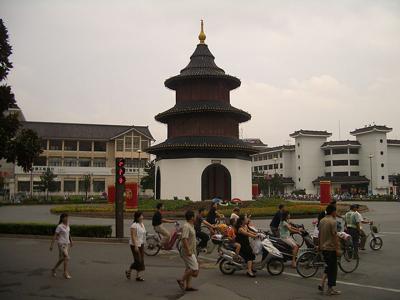finding level of pollution in a drainage system at different location in a town
by mohit pareek
(mumbai, maharahstra, india)
This project was chosen by us to represent our school at a children science congress. We had to show our project to the judges when they come on a round to see all the projects.
We collected dirty water at different locations from the drainage pool. Then we gave it in laboratory to find out the level of pollutants in the water. We found that the level of pollutants were increasing as the drainage pool was going deep in the city.
We had a successful project and we won 2nd prize at that event. This type of science projects try to give external exposure to students which is very good. I love to love to do this kind of project again and again...
Barry's Response - Sounds like the work of a hydrological engineer. Perhaps that's the field of study you should pursue, Mohit. There will never be a shortage of work. Thanks for your photo.
Search this site for more information now.
Comments for finding level of pollution in a drainage system at different location in a town
|
||
|
||
|
||
|
||
|
||
|
||
|
||
Do you have concerns about air pollution in your area??
Perhaps modelling air pollution will provide the answers to your question.
That is what I do on a full-time basis. Find out if it is necessary for your project.
Have your Say...
on the StuffintheAir facebook page
Other topics listed in these guides:
The Stuff-in-the-Air Site Map
And,
Thank you to my research and writing assistants, ChatGPT and WordTune, as well as Wombo and others for the images.
GPT-4, OpenAI's large-scale language generation model (and others provided by Google and Meta), helped generate this text. As soon as draft language is generated, the author reviews, edits, and revises it to their own liking and is responsible for the content.




